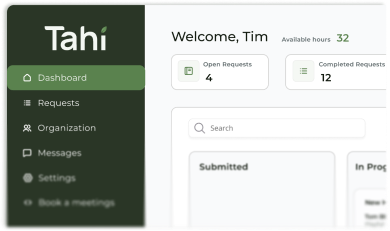Semantic HTML
Semantic HTML is the practice of using meaningful HTML tags that describe the content's purpose, improving a site's structure for SEO and accessibility.
What does semantic HTML actually mean for your website?
Semantic HTML is the practice of using HTML elements that clearly describe their purpose and meaning, rather than just their appearance. Instead of building everything with generic containers, semantic HTML uses specific tags like navigation for menus, main for primary content, article for blog posts, and header for page tops. Think of it as giving your website a logical, readable structure that both humans and machines can understand.
This approach is like organising a library with proper categories and labels instead of just dumping all books in random piles. When search engines crawl your site, they can immediately understand which content is most important, how your page is structured, and what each section contains. This clarity helps them index your content more effectively and can improve your search rankings through better content understanding.
Why is semantic HTML crucial for business website success?
For businesses, semantic HTML delivers two critical benefits: better search engine optimisation and improved accessibility. Search engines like Google use your HTML structure to understand your content hierarchy. When you use proper heading tags (H1 for page titles, H2 for major sections), search engines know which content is most important. This can directly impact your visibility in search results and help potential customers find your business more easily.
Accessibility is equally important for reaching your full audience. Screen readers and other assistive technologies rely on semantic HTML to navigate and interpret your content. When someone using a screen reader visits your site, properly structured HTML allows them to jump between sections, understand the page layout, and access your information effectively. This not only expands your potential customer base but demonstrates that your business values inclusivity and user experience.
How does Webflow support semantic HTML best practices?
Webflow provides excellent tools for creating semantically structured websites, but the platform is only as good as the developer using it. By default, you might work with generic 'Div Blocks', but Webflow makes it simple to change any element to the appropriate semantic tag. A skilled developer knows when to use section, article, nav, header, main, and footer tags to create a logical document structure.
The key is working with developers who understand these principles and implement them systematically. This is where frameworks like Client-First become valuable, providing not just visual organisation but also semantic structure. When your Webflow site is built with proper semantic HTML, it creates a solid foundation for performance, accessibility, and SEO that benefits your business for years to come.
What are common examples of semantic elements in a professional website?
A well-structured business website uses semantic elements strategically throughout its design. Your page header containing the logo and main navigation uses the header tag, while the navigation menu itself is wrapped in a nav element. The unique, primary content of each page sits within a main tag, ensuring search engines and screen readers know where your core message lives.
Individual content sections like 'About Us', 'Services', or 'Testimonials' each use section tags to create clear boundaries. If you have a blog, each post preview or full article uses the article tag, indicating self-contained content. Your page footer with copyright, contact links, and additional navigation uses the footer tag. This systematic approach creates a clear content hierarchy that serves both your users and search engines through improved information architecture.
How does Tahi Studio ensure semantic excellence in every Webflow project?
At Tahi Studio, semantic HTML isn't an afterthought, it's built into our development process from the ground up. Our expert team understands that truly professional websites require more than just visual appeal. They need solid foundations that support long-term business growth, and that starts with proper semantic structure that search engines can understand and users can navigate effectively.
Every Webflow project we deliver follows semantic best practices, ensuring your website is accessible, SEO-friendly, and built for sustainable success. This attention to foundational quality is part of our commitment to uncompromising standards and genuine partnership. When you work with us through our subscription model, you get the expertise to build a digital presence that not only looks exceptional but performs exceptionally, supporting your business goals through our transparent processes.






